About BANG ransomware virus
BANG ransomware is regarded as a dangerous infection, also known as ransomware or file-encrypting malicious program. Data encrypting malicious program isn’t something everyone has dealt with before, and if you’ve just encountered it now, you’ll learn the hard way how damaging it could be. Your files may have been encrypted using strong encryption algorithms, making you not able to access them anymore. 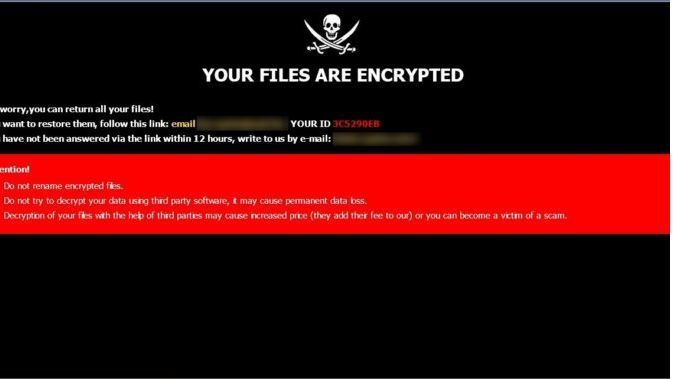
This is what makes ransomware a very severe threat to have on your device because it might lead to permanent file loss. You do have the option of buying the decoding utility from criminals but for reasons we will mention below, that isn’t the best choice. Data decryption even after payment is not guaranteed so you could just be spending your money for nothing. Keep in mind who you’re dealing with, and do not expect cyber crooks to bother to provide you a decryptor when they could just take your money. Moreover, by paying you would be financing the crooks’ future projects. Do you really want to support the kind of criminal activity. The more people pay, the more profitable it gets, thus increasingly more people are attracted to it. Consider investing that money into backup instead because you might be put in a situation where file loss is a possibility again. In case you did have backup prior to infection, uninstall BANG ransomware and recover files from there. You might also not know how file encoding malware are distributed, and we’ll discuss the most frequent methods in the below paragraphs.
Ransomware distribution methods
Generally, ransomware is spread via spam emails, exploit kits and malicious downloads. Seeing as these methods are still rather popular, that means that people are somewhat careless when using email and downloading files. There is some likelihood that a more sophisticated method was used for infection, as some data encrypting malicious programs do use them. Cyber criminals do not have to put in much effort, just write a generic email that looks somewhat convincing, attach the infected file to the email and send it to hundreds of users, who might believe the sender is someone trustworthy. Money related issues are a frequent topic in those emails since people take them more seriously and are more likely to engage in. Commonly, criminals pretend to be from Amazon, with the email warning you that strange activity was noticed in your account or some type of purchase was made. When you’re dealing with emails, there are certain things to look out for if you wish to guard your computer. Before proceeding to open the file attached, check the sender’s identity and whether they can be trusted. Even if you know the sender, don’t rush, first investigate the email address to ensure it matches the address you know belongs to that person/company. Grammar errors are also a sign that the email might not be what you think. Another big hint could be your name being absent, if, lets say you are an Amazon user and they were to email you, they would not use universal greetings like Dear Customer/Member/User, and instead would insert the name you have provided them with. Unpatched software vulnerabilities could also be used by a data encrypting malicious program to get into your system. Software has vulnerabilities that can be used to infect a system but they’re regularly fixed by vendors. Unfortunately, as shown by the WannaCry ransomware, not everyone installs those fixes, for different reasons. We recommend that you update your software, whenever a patch is released. Updates could be set to install automatically, if you find those notifications annoying.
What does it do
As soon as the ransomware gets into your device, it’ll scan your system for certain file types and once they’ve been found, it’ll encode them. Your files won’t be accessible, so even if you don’t realize what’s going initially, you’ll know eventually. Files that have been affected will have a weird file extension, which usually helps people recognize which file encoding malicious program they’re dealing with. If a powerful encryption algorithm was used, it might make file restoring potentially impossible. A ransom notification will be placed in the folders containing your files or it will show up in your desktop, and it ought to explain how you could restore files. Their suggested method involves you paying for their decryption tool. The note should plainly explain how much the decryptor costs but if that isn’t the case, you will be provided a way to contact the hackers to set up a price. As you have likely guessed, paying is not the option we would choose. Paying ought to be your last course of action. Try to remember whether you’ve ever made backup, your files may be stored somewhere. Or, if you are lucky, a free decryptor may be available. We should mention that every now and then malware researchers are able to create a decryption utility, which means you could restore data for free. Take that into account before paying the ransom even crosses your mind. You wouldn’t have to worry if you ever end up in this situation again if you invested some of that sum into buy backup with that money. If you had backed up your most essential files, you just terminate BANG ransomware virus and then proceed to data restoring. Now that you are aware of how dangerous ransomware can be, do your best to avoid it. You mainly need to keep your software updated, only download from secure/legitimate sources and stop randomly opening files attached to emails.
Ways to fix BANG ransomware virus
an anti-malware software will be a necessary software to have if you want the ransomware to be gone fully. It might be quite difficult to manually fix BANG ransomware virus because a mistake might lead to additional harm. So as to prevent causing more damage, use an anti-malware tool. These types of utilities are made with the intention of detecting or even blocking these kinds of threats. Choose and install a suitable program, scan your device to identify the infection. Sadly, such a utility won’t help to restore data. If the file encrypting malware is fully gone, restore data from backup, and if you do not have it, start using it.
Offers
Download Removal Toolto scan for BANG ransomwareUse our recommended removal tool to scan for BANG ransomware. Trial version of provides detection of computer threats like BANG ransomware and assists in its removal for FREE. You can delete detected registry entries, files and processes yourself or purchase a full version.
More information about SpyWarrior and Uninstall Instructions. Please review SpyWarrior EULA and Privacy Policy. SpyWarrior scanner is free. If it detects a malware, purchase its full version to remove it.

WiperSoft Review Details WiperSoft (www.wipersoft.com) is a security tool that provides real-time security from potential threats. Nowadays, many users tend to download free software from the Intern ...
Download|more


Is MacKeeper a virus? MacKeeper is not a virus, nor is it a scam. While there are various opinions about the program on the Internet, a lot of the people who so notoriously hate the program have neve ...
Download|more


While the creators of MalwareBytes anti-malware have not been in this business for long time, they make up for it with their enthusiastic approach. Statistic from such websites like CNET shows that th ...
Download|more
Quick Menu
Step 1. Delete BANG ransomware using Safe Mode with Networking.
Remove BANG ransomware from Windows 7/Windows Vista/Windows XP
- Click on Start and select Shutdown.
- Choose Restart and click OK.

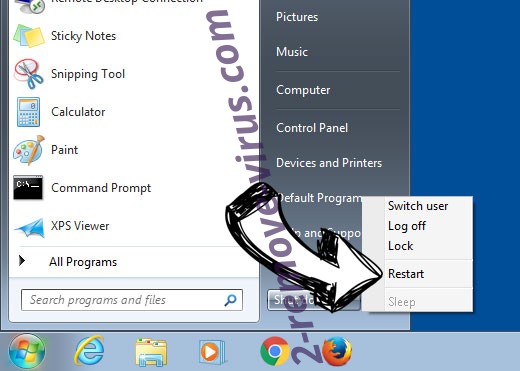
- Start tapping F8 when your PC starts loading.
- Under Advanced Boot Options, choose Safe Mode with Networking.

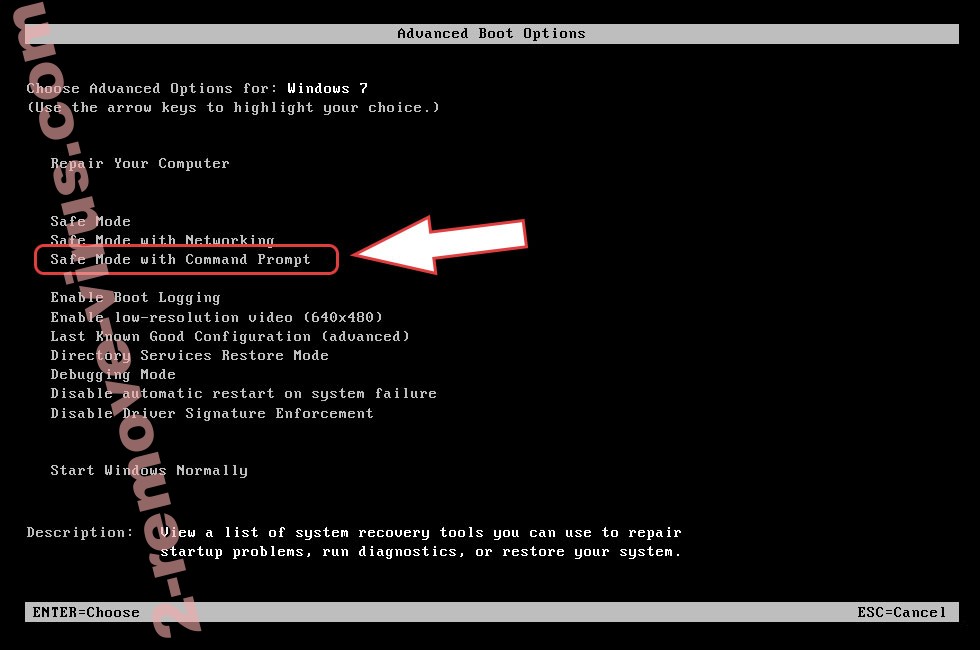
- Open your browser and download the anti-malware utility.
- Use the utility to remove BANG ransomware
Remove BANG ransomware from Windows 8/Windows 10
- On the Windows login screen, press the Power button.
- Tap and hold Shift and select Restart.

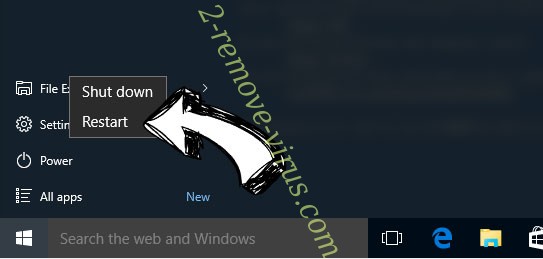
- Go to Troubleshoot → Advanced options → Start Settings.
- Choose Enable Safe Mode or Safe Mode with Networking under Startup Settings.

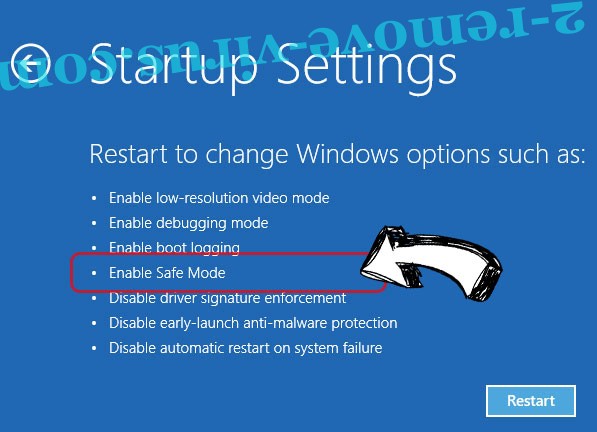
- Click Restart.
- Open your web browser and download the malware remover.
- Use the software to delete BANG ransomware
Step 2. Restore Your Files using System Restore
Delete BANG ransomware from Windows 7/Windows Vista/Windows XP
- Click Start and choose Shutdown.
- Select Restart and OK


- When your PC starts loading, press F8 repeatedly to open Advanced Boot Options
- Choose Command Prompt from the list.

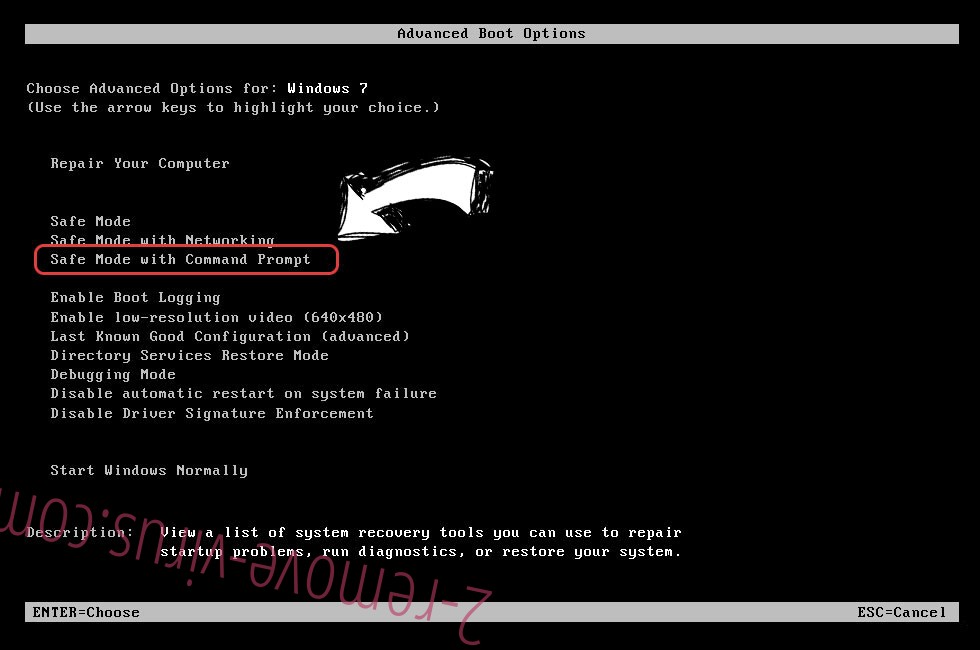
- Type in cd restore and tap Enter.

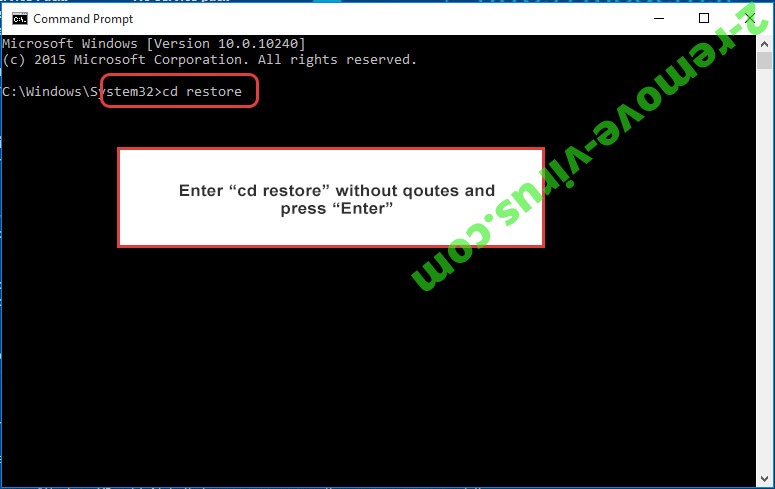
- Type in rstrui.exe and press Enter.

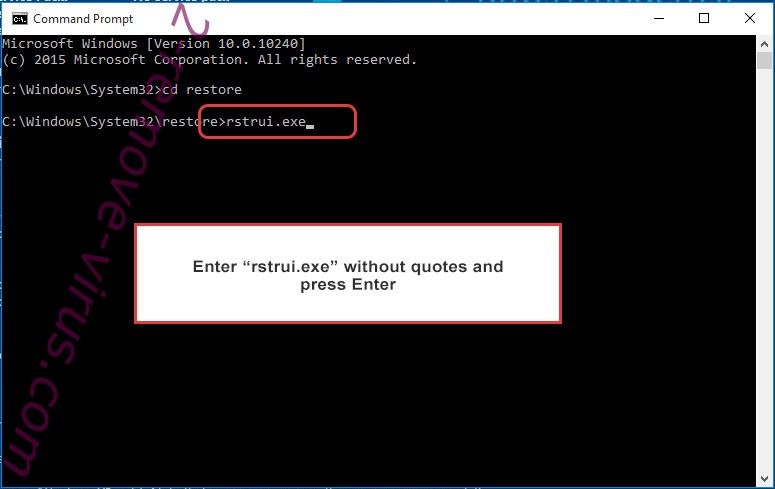
- Click Next in the new window and select the restore point prior to the infection.

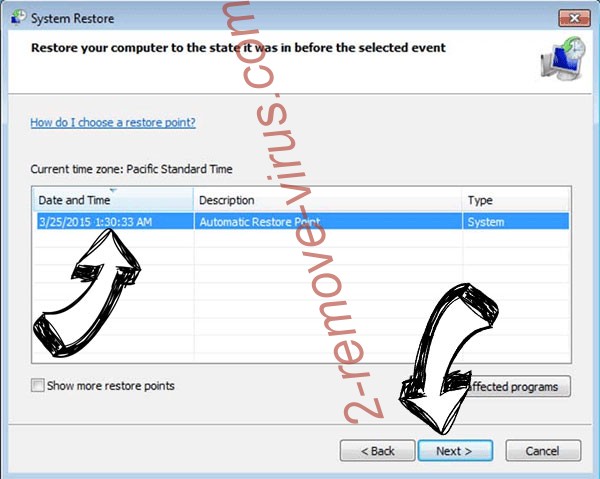
- Click Next again and click Yes to begin the system restore.

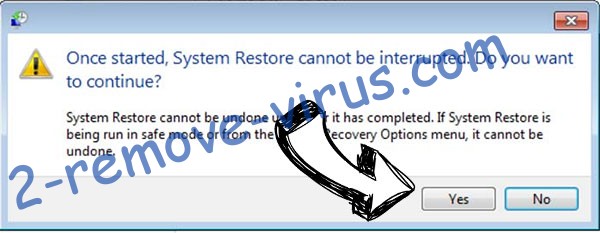
Delete BANG ransomware from Windows 8/Windows 10
- Click the Power button on the Windows login screen.
- Press and hold Shift and click Restart.


- Choose Troubleshoot and go to Advanced options.
- Select Command Prompt and click Restart.

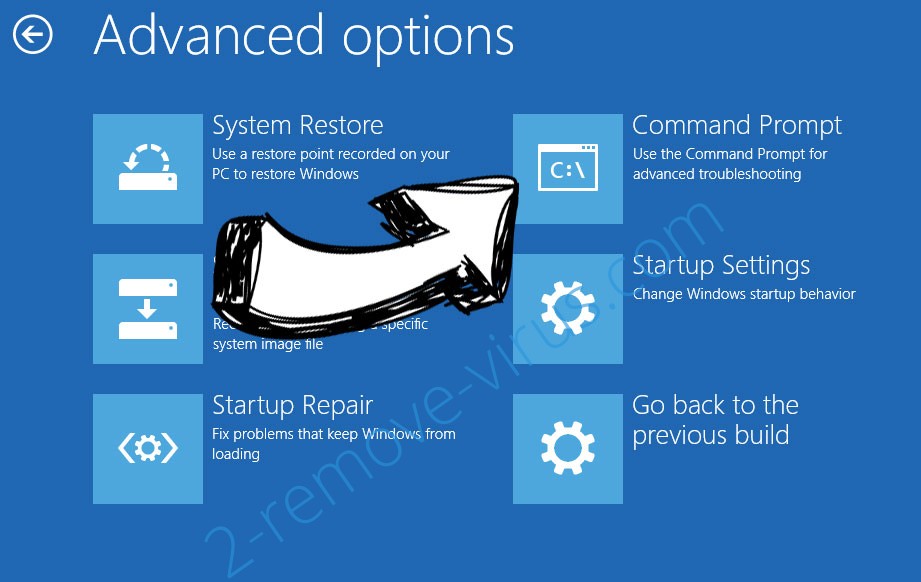
- In Command Prompt, input cd restore and tap Enter.


- Type in rstrui.exe and tap Enter again.


- Click Next in the new System Restore window.

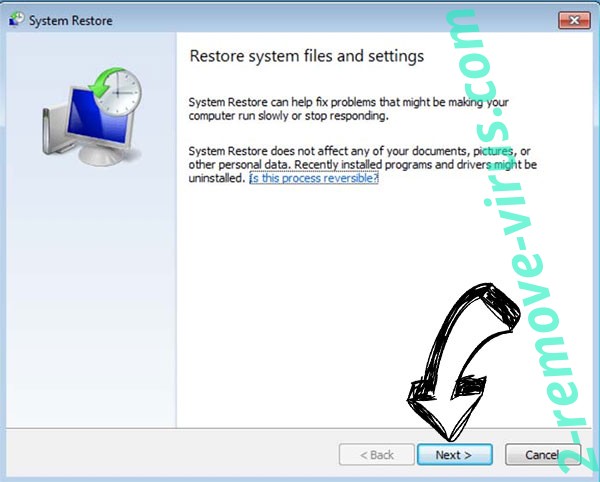
- Choose the restore point prior to the infection.


- Click Next and then click Yes to restore your system.


Site Disclaimer
2-remove-virus.com is not sponsored, owned, affiliated, or linked to malware developers or distributors that are referenced in this article. The article does not promote or endorse any type of malware. We aim at providing useful information that will help computer users to detect and eliminate the unwanted malicious programs from their computers. This can be done manually by following the instructions presented in the article or automatically by implementing the suggested anti-malware tools.
The article is only meant to be used for educational purposes. If you follow the instructions given in the article, you agree to be contracted by the disclaimer. We do not guarantee that the artcile will present you with a solution that removes the malign threats completely. Malware changes constantly, which is why, in some cases, it may be difficult to clean the computer fully by using only the manual removal instructions.
